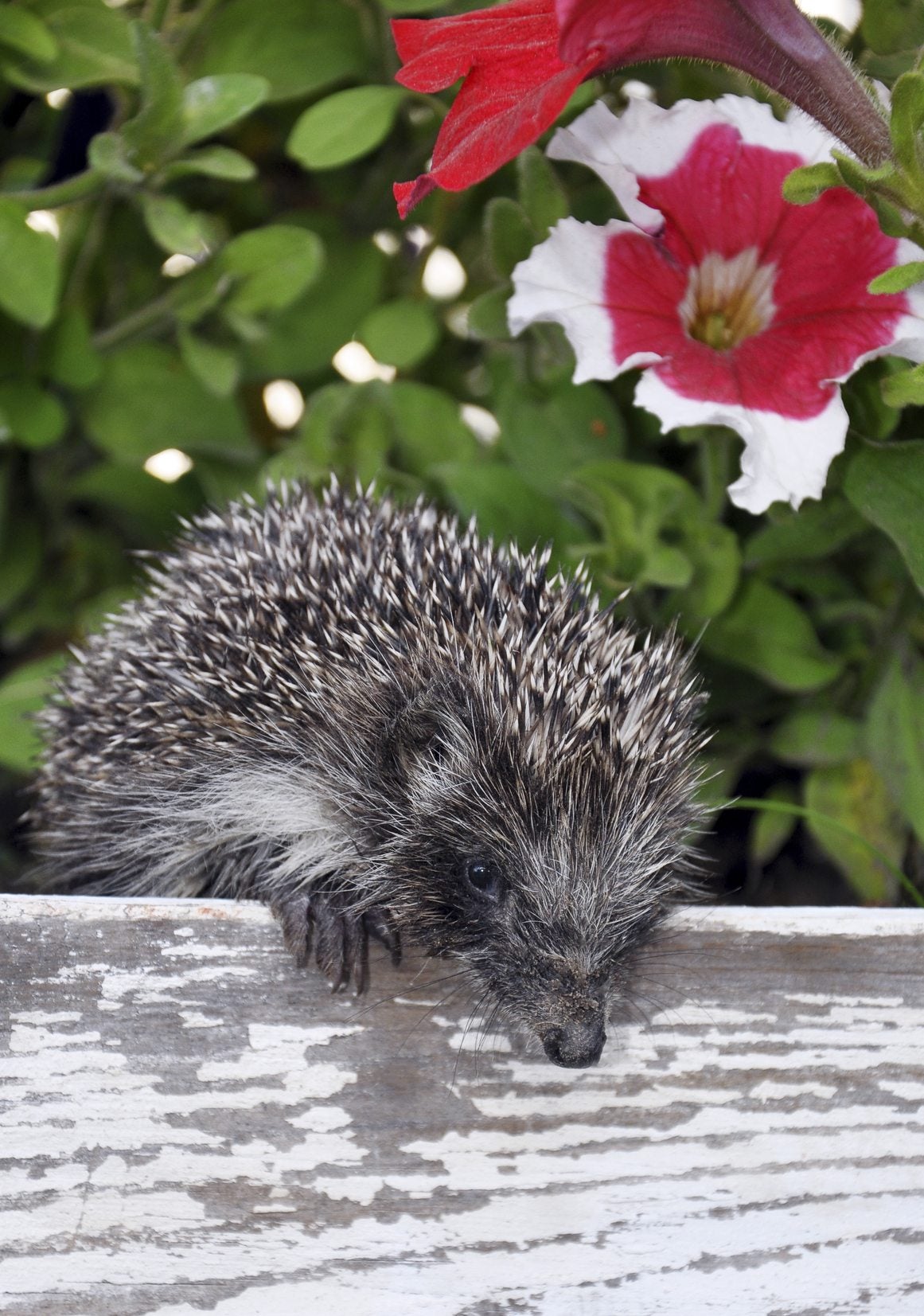Hedgehogs In Gardens: Tips On Attracting Hedgehogs To The Garden


Hedgehogs have a large range and require access to at least 10 to 12 backyards to gather all their needs. This can be tough for the little mammals, as many yards are fenced today, and they have no access to new hunting and nesting grounds. Attracting hedgehogs to the garden starts with access, but there are also a few dangers to eliminate and things you can do to make them feel more invited. What will attract hedgehogs? The same things that would attract any animal: food, shelter, security, and water.
What will Attract Hedgehogs?
There are 17 species of hedgehog, which can be found in Europe, Asia, and Africa natively and in New Zealand through introduction. These small, spiny mammals are primarily nocturnal and eat small invertebrates and insects. They are potent allies in the garden where they help keep insect populations to normal levels. How do you attract hedgehogs to gardens though? This is where you have to think like the animal and remove any potential booby traps and dangers as well as provide a safe habitat for the little mammals. Hedgehogs need plentiful food and water, but they also need nesting sites. Hedgehogs in gardens may nest under rocks, vegetation, and even inside an abandoned shed. They seek privacy and security, a place to safely sleep, and perform an important ritual, anointing. Good spaces in the garden are wild spaces, compost piles, and log piles. Most nests are built with old leaves, moss, and other plant material. You can make a simple hedgehog nest in just a few minutes. Simply cut two air vents in the side of a cardboard box, along with a small entrance. Place clean, dry grass and leaves inside the box and close it. Position the opening to the south and place plastic or a tarp over the structure, disguising it with pine needles, leaves, and other debris.
Dangers to Hedgehogs in Gardens
Dogs and even cats can pose a threat to hedgehog safety, but so can some other common garden items.
- Mowers can injure resting hedgehogs, so always check the lawn before mowing.
- Cars are another danger and driveways, especially those that may not be paved and slightly overgrown, need to be checked before you set out on errands.
- Pesticide use is also a red flag in the hedgehog garden. Any insect or invertebrate that has the pesticide in it will transfer it to the hedgehog and make it sick.
- You might think you need to feed the hedgehogs to attract them, but this simply fattens mice and other rodents. If you have plenty of vegetation and access to the neighbor's yards, the hedgehog will be fine. If you must feed it, avoid any cow's milk, as it can make the animal sick.
How to Attract Hedgehogs to Gardens
Attracting hedgehogs to the garden relies upon more than food, shelter, and water. The animals need peace and quiet during the daytime when they are sleeping. It is unlikely that a busy daycare will make a good hedgehog home, as curious children and the resulting noise will probably scare the animal away. Similarly, kenneled, noisy dogs can be a problem. Even if they can't get at the hedgehog, their barking will drive away the tiny mammal. Construction zones, busy roadways, and business centers are not what will attract hedgehogs. Rural, naturally landscaped properties with quiet, simple, day-to-day life will invite these charming, spiked animals to take up residence. Keeping it simple, safe, and full of food and water options are surefire ways to bring hedgehogs into your garden.
Gardening tips, videos, info and more delivered right to your inbox!
Sign up for the Gardening Know How newsletter today and receive a free copy of our e-book "How to Grow Delicious Tomatoes".

Bonnie Grant is a professional landscaper with a Certification in Urban Gardening. She has been gardening and writing for 15 years. A former professional chef, she has a passion for edible landscaping.